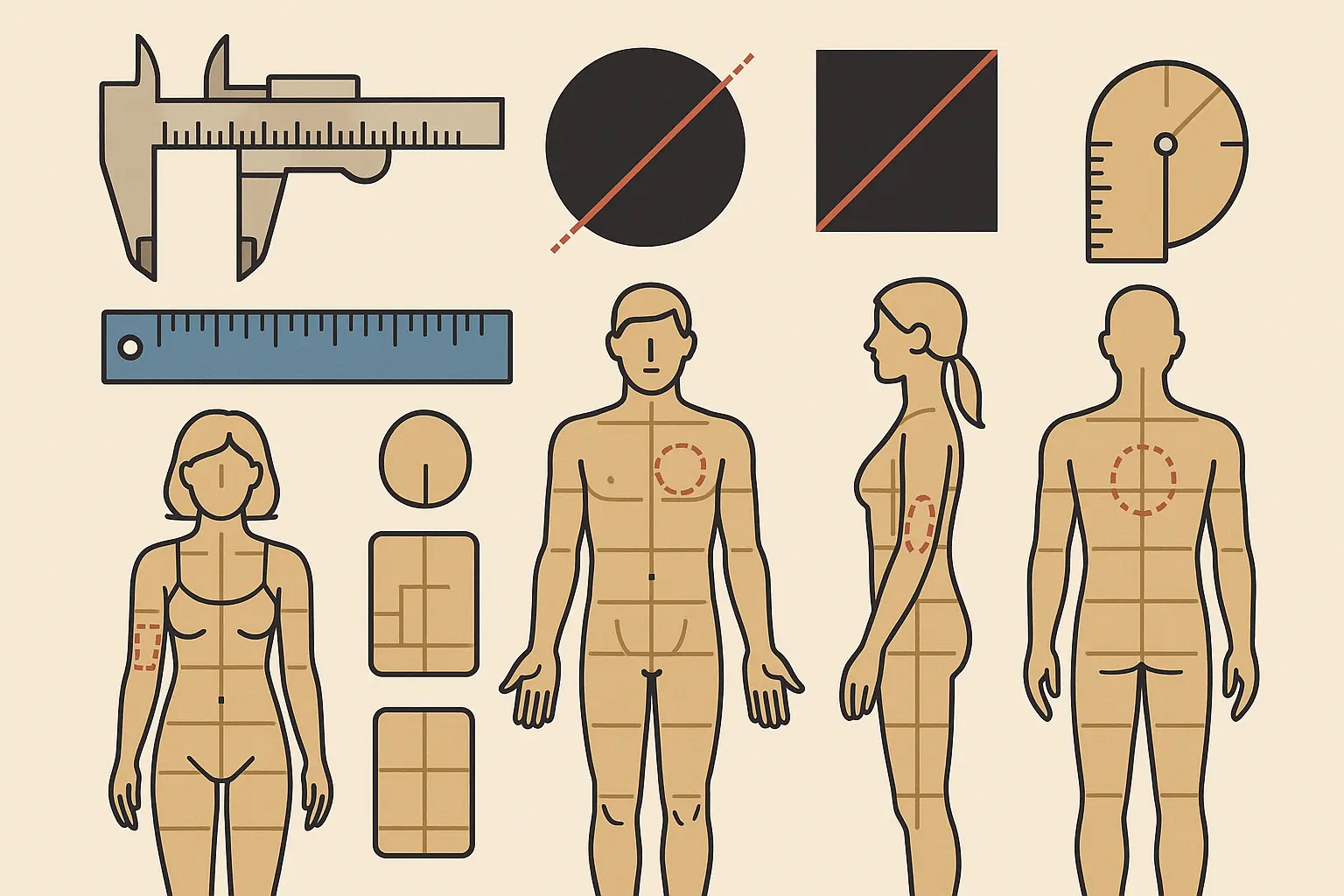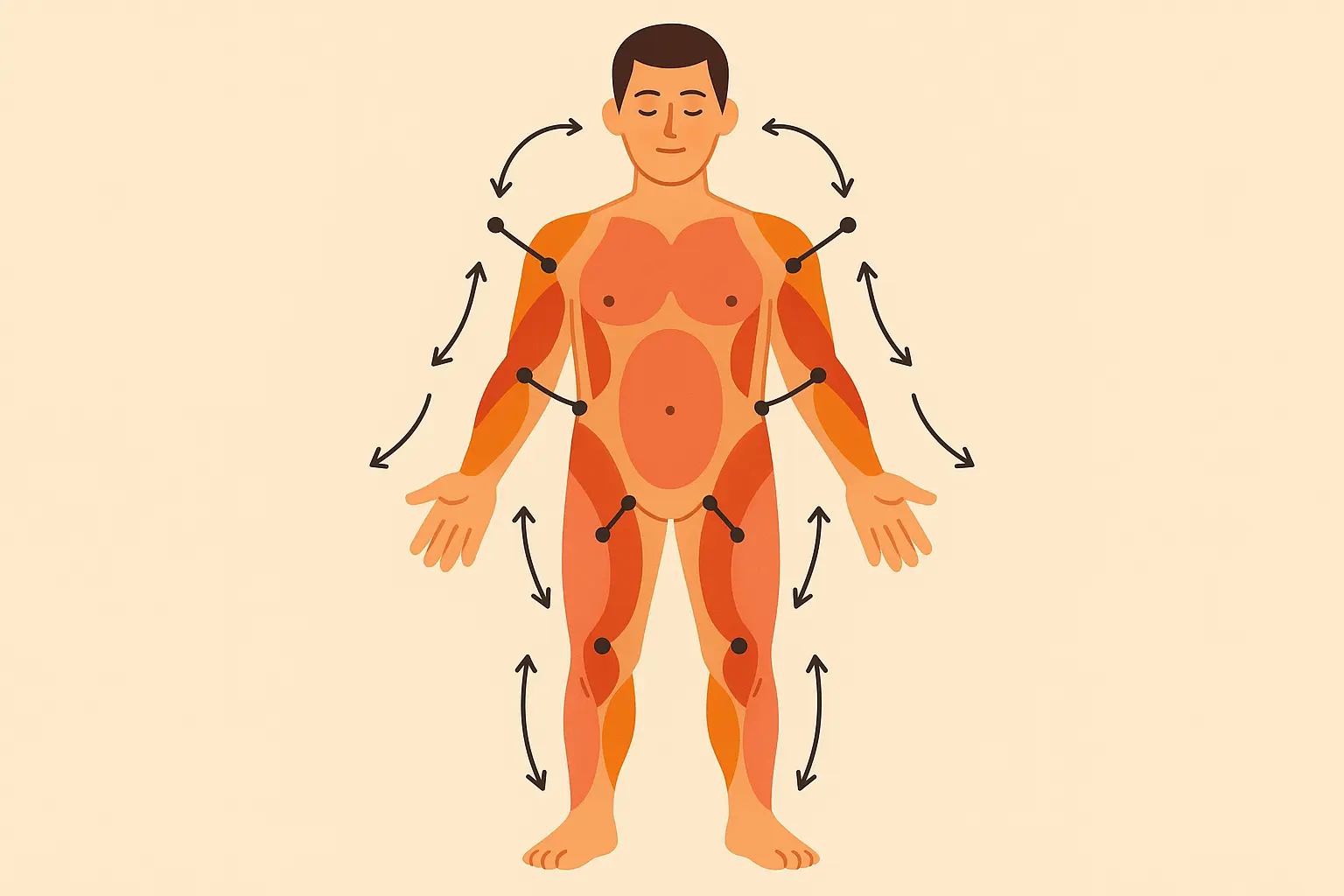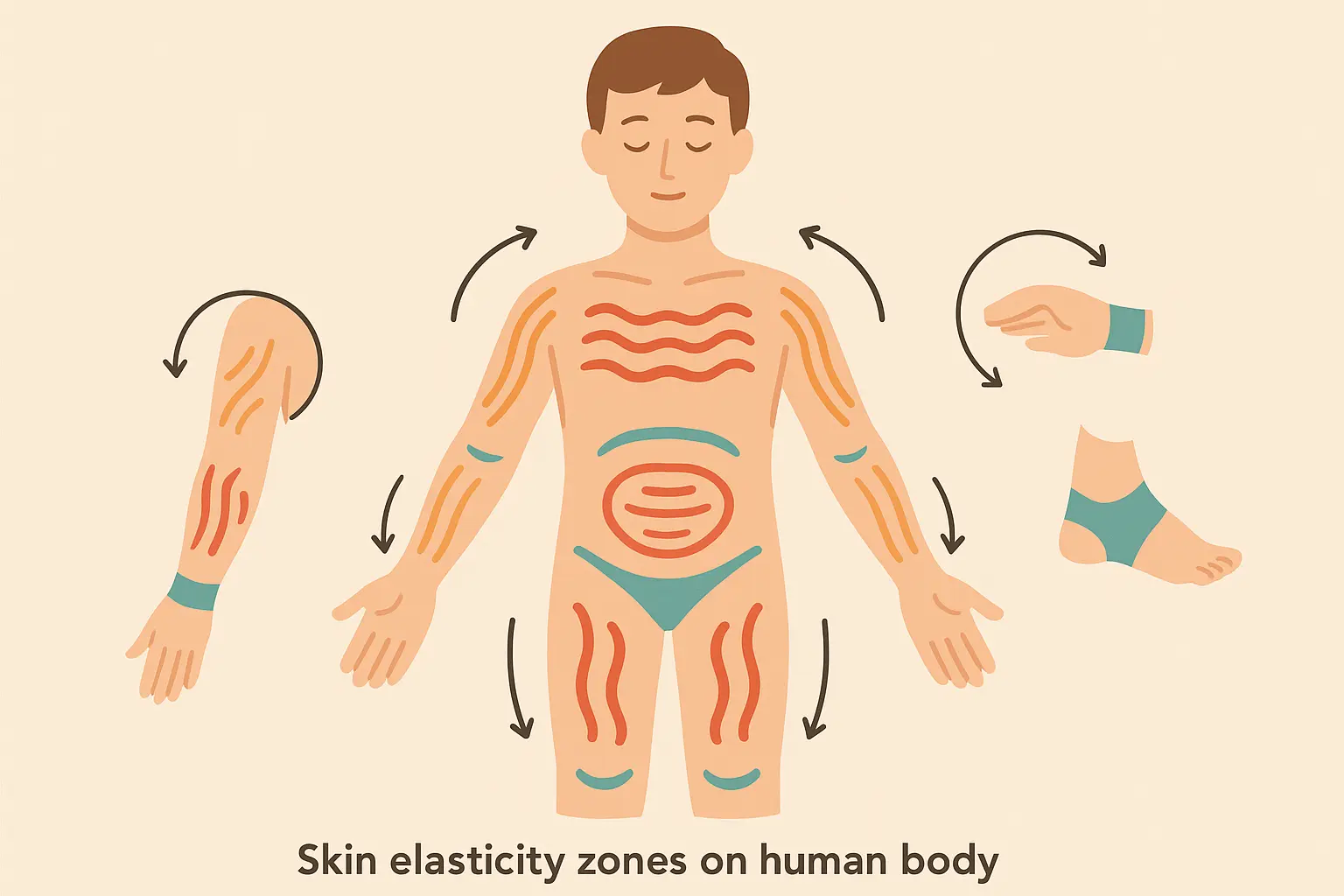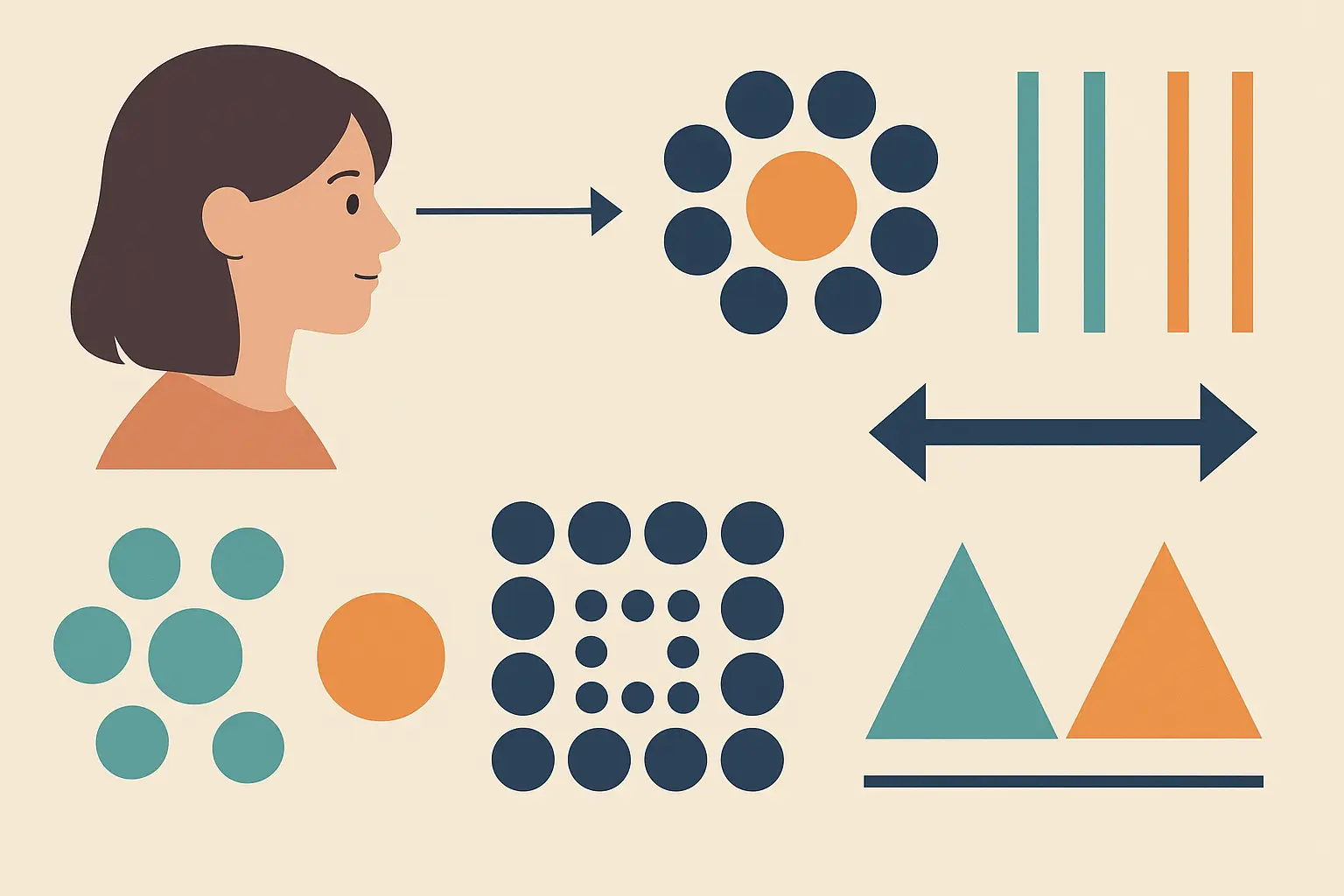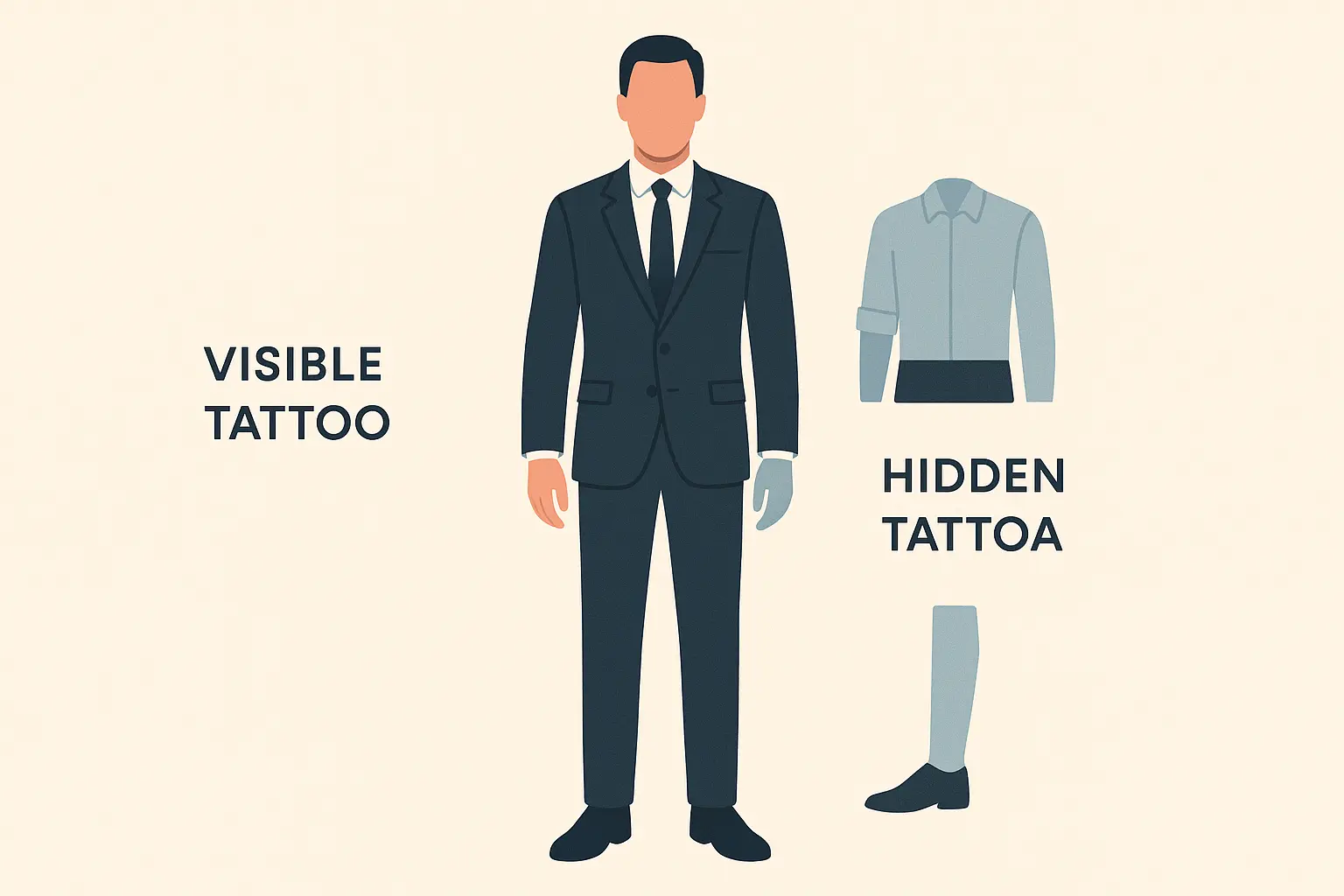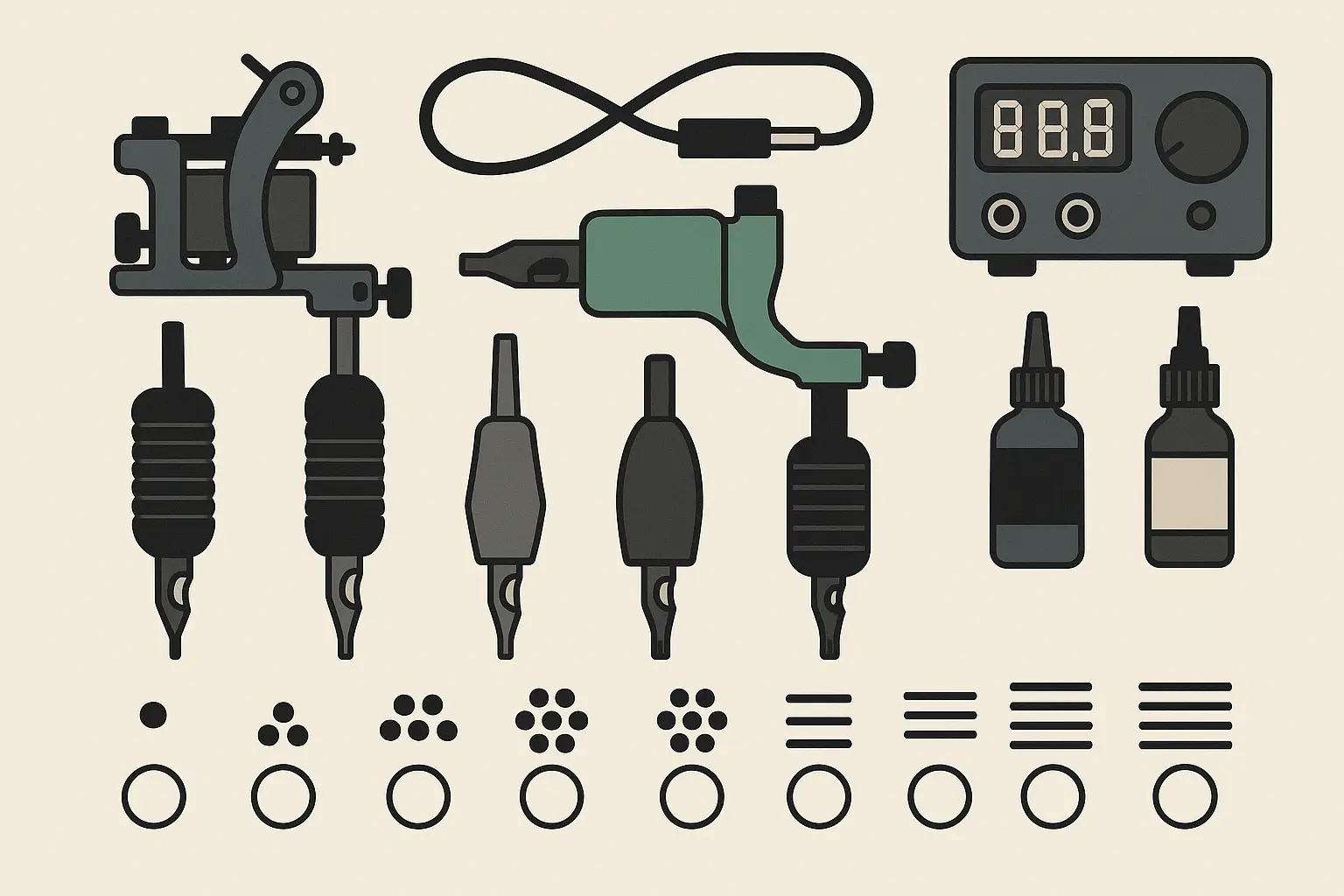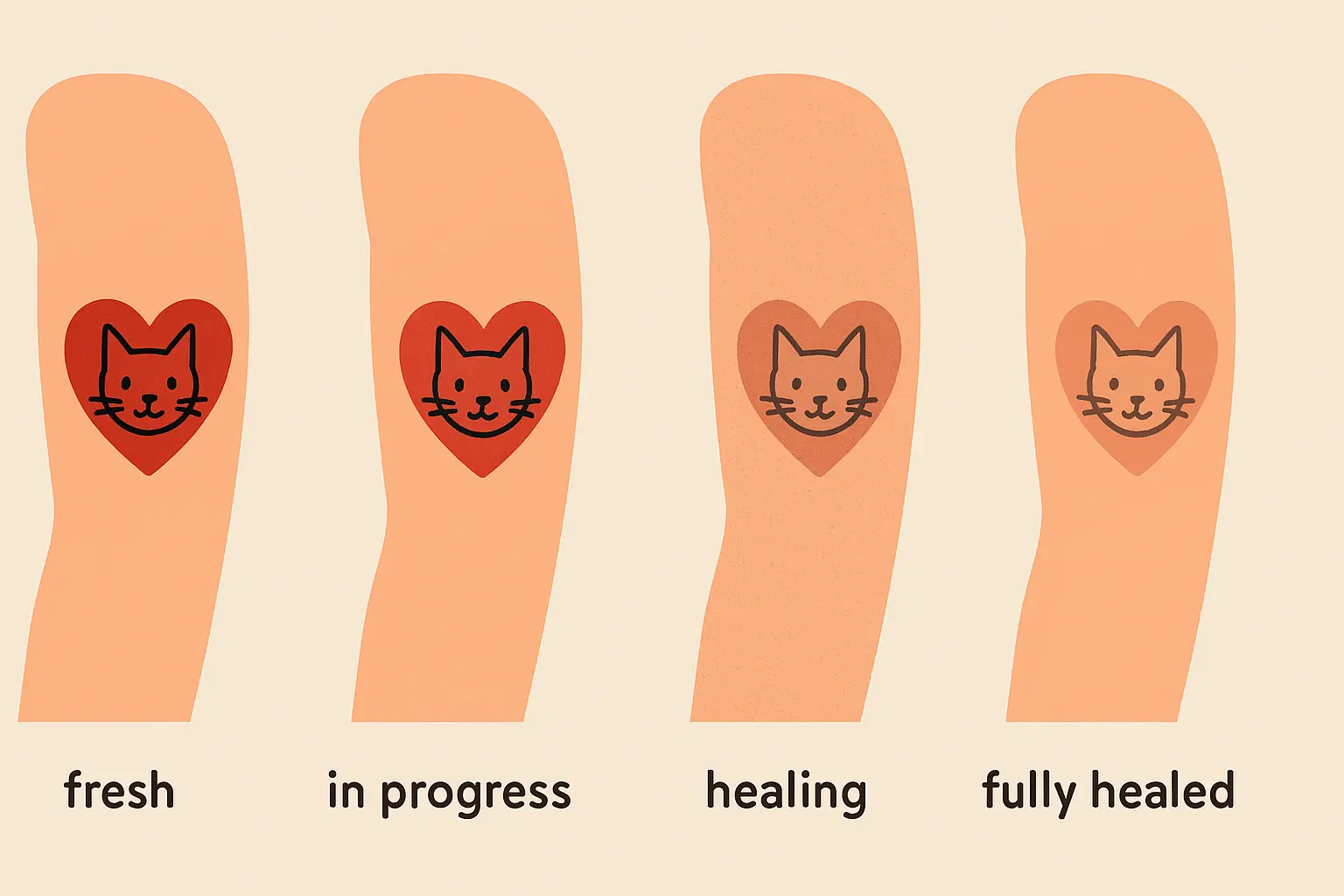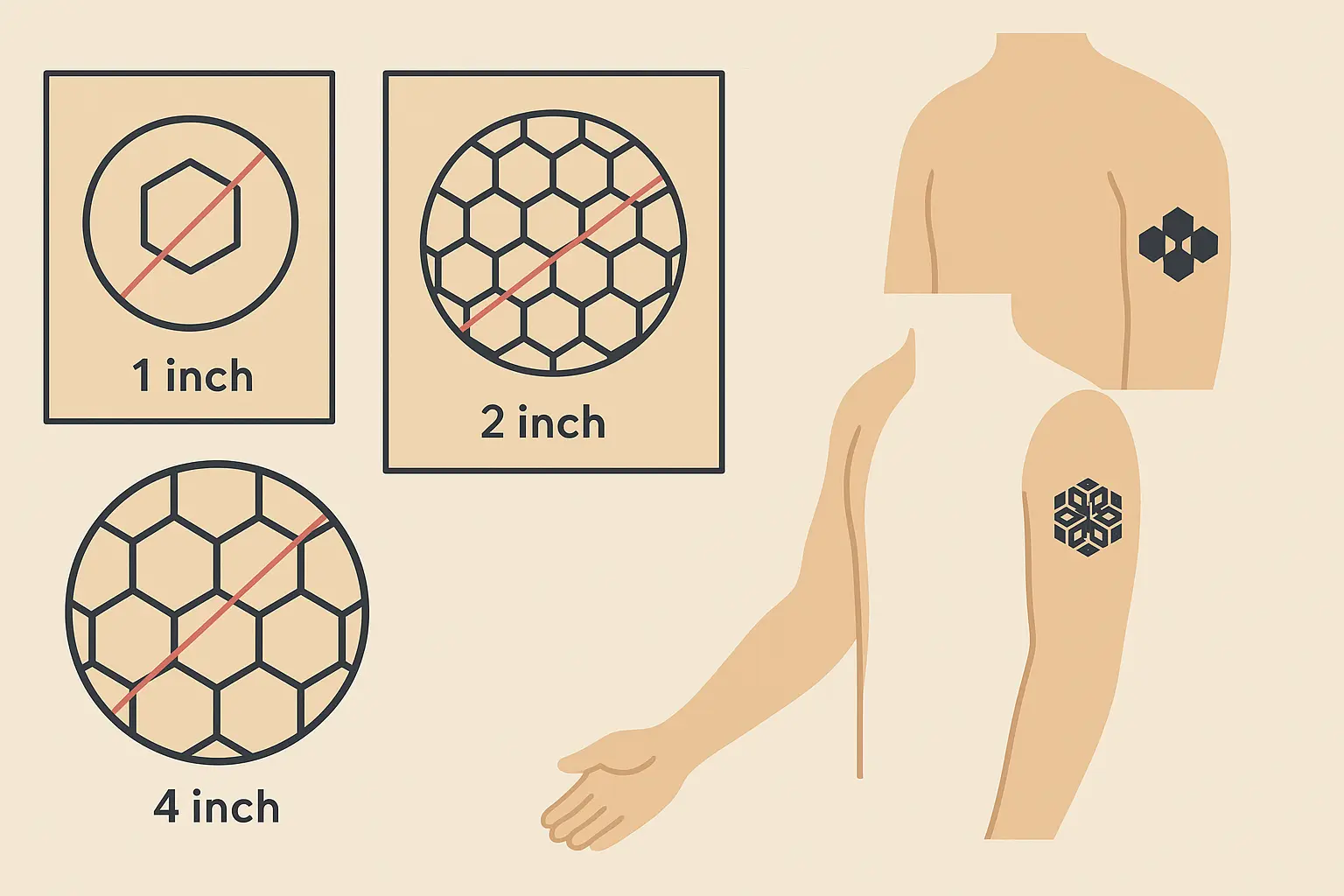Why Tattoo Size Charts Don’t Tell the Whole Story (And What Actually Matters)
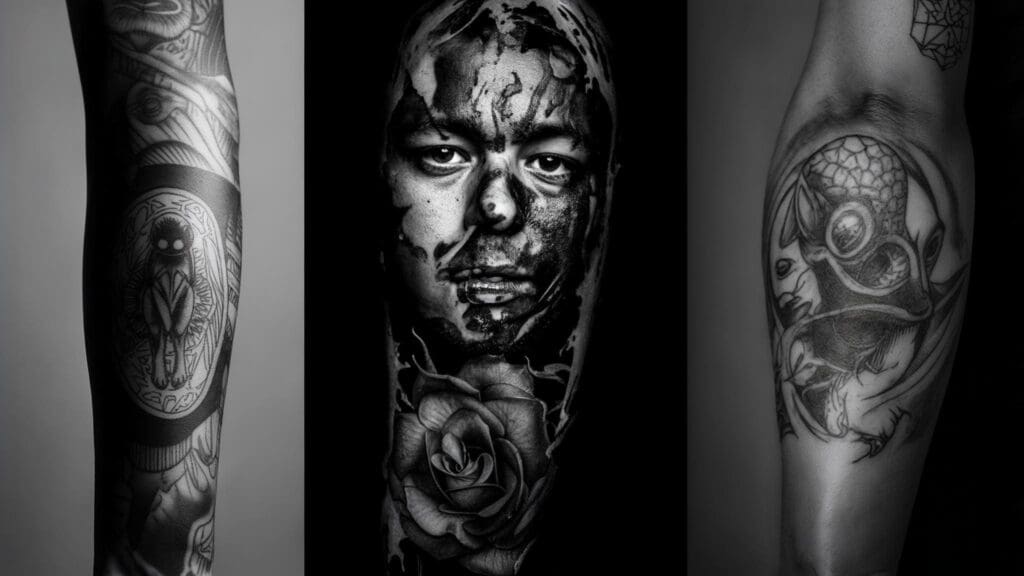
Most people think choosing a tattoo size is pretty straightforward – just measure the space and pick what fits, right? But here’s the thing that blew my mind when I first learned it: recent industry data shows that micro tattoos under 2 inches require 30-50 hours or more for very large scale projects like full back pieces according to Hyper Inkers. That huge time difference isn’t just about complexity – it reveals how your body’s movement, psychology, and the technical realities of tattooing completely change what size actually works for you.
Table of Contents
-
Why Traditional Size Charts Are Basically Useless
-
Your Body Moves Way More Than You Think
-
The Psychology Behind Size Perception (It’s Actually Pretty Wild)
-
Technical Reality Check: What’s Actually Possible
-
How Your Tattoo Will Actually Age Over Time
-
What Actually Determines Your Size Options
-
Bottom Line: What You Really Need to Know
TL;DR
-
Your body’s movement and anatomy should dictate tattoo size, not generic charts
-
Skin stretches differently everywhere – that 4-inch tattoo looks totally different on your flexed bicep versus relaxed
-
Dense designs make tattoos appear 20-30% larger than they actually measure
-
Micro tattoos under 1 inch need specialized skills most artists don’t have
-
Tattoo ink slowly spreads outward about 0.1mm per year, affecting how it looks long-term
-
Professional visibility requirements change drastically depending on your career path
-
There’s actually math behind balanced proportions (golden ratio of 1.618:1) that works better than random measurements
Why Traditional Size Charts Are Basically Useless
Look, I’ve been down this rabbit hole, and here’s what I discovered – those generic tattoo size guides you see everywhere miss the most important stuff. They ignore how your specific body works, how you move through life, and what you actually want your tattoo to accomplish. It’s like using a one-size-fits-all approach for something that’s literally going on your unique body.
According to Hyper Inkers, “A 1-inch tattoo can contain roughly 25 distinct detail points maximum before elements merge into an unreadable mess.” This isn’t just technical jargon – it’s the reality that completely destroys those generic size recommendations that don’t account for what you actually want your design to look like. When you’re planning different tattoo sizes, the detail capacity becomes way more important than arbitrary measurements.
Your Body Isn’t a Flat Canvas (Shocking, I Know)
Here’s something that seems obvious but gets ignored constantly – every part of your body moves differently throughout the day. Your shoulders, elbows, knees – they’re constantly stretching and flexing in ways that completely change how tattoo dimensions look. Those generic size charts act like you’re a mannequin that never moves.
Picture this: you get a perfect 3-inch geometric mandala on your shoulder blade. Looks amazing when you’re standing there admiring it in the mirror. But then you reach up to grab something from a high shelf, and suddenly that precise circle becomes a stretched-out oval that’s 20% wider. Nobody warns you about this stuff! Understanding proper shoulder tattoo sizing becomes crucial when you realize how much movement affects how your tattoo looks in real life.
The tattoo size you choose needs to work with how you actually use your body, not just how you look standing still. I’ve seen too many people choose dimensions based on mirror measurements, only to realize their ink looks weird during normal activities.
There’s Actually Math Behind Perfect Proportions
This is where things get interesting – professional tattoo artists are increasingly using something called the golden ratio and body measurement calculations to figure out sizes that actually enhance your natural proportions instead of fighting against them. It’s not as complicated as it sounds, but it’s way more effective than guessing.
|
Body Area |
Golden Ratio Calculation |
Optimal Size Range |
|---|---|---|
|
Chest |
Distance between nipples × 0.618 |
4-7 inches |
|
Forearm |
Wrist to elbow × 0.382 |
3-5 inches |
|
Shoulder |
Shoulder width × 0.236 |
2-4 inches |
|
Calf |
Ankle to knee × 0.382 |
4-6 inches |
|
Back |
Shoulder blade width × 1.618 |
6-12 inches |
Golden Ratio Size Calculations
You don’t need to be a math genius here, but there’s actually a simple formula that artists use to make tattoos look naturally balanced on your body. It’s the same principle that makes certain faces and buildings pleasing to look at – the magical 1.618:1 ratio. For chest tattoos, the ideal width often equals the distance between your nipples multiplied by 0.618, creating proportions that work with your anatomy rather than against it.
When planning chest tattoo dimensions, these mathematical principles help determine a tattoo size that complements your natural build rather than looking randomly placed. The chest tattoo sizes that work best follow these proportional relationships rather than arbitrary measurements.
Your Build Actually Matters
Here’s something that should be obvious but gets ignored – a standard 4-inch tattoo recommendation doesn’t account for whether you’re putting it on a bodybuilder’s massive shoulder or someone with a smaller frame. Your build and muscle mass significantly impact how tattoo sizes appear, requiring personalized scaling that considers your individual body type.
Quick Sizing Checklist Based on Your Build:
-
Measure your target area both relaxed and flexed
-
Add 15% size adjustment if you’re muscular
-
Account for seasonal weight changes (±10lbs is typical)
-
Consider what clothes you wear regularly
-
Test the size with a temporary transfer first
A 4 inch tattoo on someone lean creates a completely different visual impact than the same tattoo sizes on someone with more muscle mass. This is why personalized measurements matter way more than generic recommendations.
Your Body Moves Way More Than You Think
Look, here’s something most people don’t think about until it’s too late – your skin isn’t just sitting there like a canvas on a wall. It’s constantly moving, stretching, and changing throughout the day. Understanding how your skin behaves in different body zones is crucial for determining tattoo proportions that will look good both now and decades from now. The tattoo size you choose today needs to account for how your skin behaves during actual daily activities.
Mapping Your Skin’s Stretch Zones
Different parts of your body stretch at totally different rates throughout daily activities, and this directly affects how tattoo sizes appear when you’re actually living your life. High-movement areas need specific size adjustments that account for skin elasticity and stretching patterns to maintain visual coherence across all your positions.
Research from Fashion Beans shows that “small tattoos usually take between one and three hours” to complete, but this timeframe increases dramatically in high-movement areas where artists have to work around natural skin tension patterns. This is why small tattoo pricing can vary significantly based on placement in these dynamic zones that require extra technical precision.
Small tattoo sizes in these moving areas need extra consideration. The tattoo size that works perfectly on your ribcage might look completely different on your wrist where skin movement is constant.
Age Changes Everything (Sorry, But It’s True)
Nobody likes talking about this, but your skin changes as you get older. After 20, you lose about 1% of your collagen production every year. What does that mean for your tattoo? Well, that razor-sharp 2-inch geometric design might start looking a little softer around the edges in 10-15 years.
Planning your 2 inch tattoo with aging in mind means choosing a tattoo size that can handle some softening over the decades. Sharp geometric patterns need slightly larger dimensions to maintain their impact as your skin changes.
Your Proportions Aren’t Average (And That’s Good)
Here’s something that blew my mind when I first learned it – your arm span usually equals your height, but not always. If you’ve got longer arms relative to your torso, sleeve tattoos need different spacing to look balanced, while shorter limbs require adjusted spacing to avoid overcrowding.
Someone with a 6-foot height but 6’4″ arm span needs sleeve elements spaced 8% further apart than standard recommendations suggest. Without this adjustment, their tattoo elements look cramped and poorly proportioned despite following traditional size guidelines. Understanding these proportional relationships becomes essential when planning half sleeve tattoo dimensions that need to flow naturally with your unique arm proportions.
The tattoo sizes you choose for sleeve work need to account for your specific proportions. Standard measurements fail when your body doesn’t match average dimensions. I’ve seen beautiful designs ruined because the tattoo size didn’t account for individual anatomical differences.
The Psychology Behind Size Perception (It’s Actually Pretty Wild)
Okay, this is where things get really interesting. Your brain plays tricks on you when it comes to tattoo sizes, and understanding this can save you from making decisions you’ll regret. Human visual processing and cognitive biases dramatically influence how tattoo sizes are perceived by both you and everyone else who sees them.
The tattoo sizes you think you want might not create the visual effect you’re actually after. Our brains process tattoo size based on way more factors than simple measurements.
Your Eyes Are Lying to You
Ever notice how a solid black tattoo looks bigger than an outline of the same exact size? That’s your brain processing “visual weight.” Design elements, color density, and empty space affect how large tattoos appear regardless of actual measurements. Your tattoo size perception gets completely skewed by these design elements.
Dense Designs Look Way Bigger
Heavily saturated designs can appear 20-30% larger than they actually measure, while fine line work looks smaller. This psychological effect means your tattoo size measurements need adjustment based on design density to achieve your desired visual impact.
This principle is particularly important when considering fine line tattoo sizing, as these designs often need to be larger than expected to achieve the desired visual presence. The tattoo size you measure might need to be 25% larger for fine line work to match the visual impact of a bold design.
Empty Space Changes Everything
Strategic use of empty areas within tattoo designs controls perceived size without changing actual dimensions. Dense designs with minimal breathing room feel cramped and appear smaller, while designs incorporating negative space feel more expansive and impactful. The tattoo size stays the same, but the visual impact changes dramatically.
Context Changes Everything
Here’s something most people don’t consider – where you work, how you dress, and your social environment significantly influence what tattoo size makes sense for your lifestyle and long-term goals.
Recent celebrity collaborations highlight changing size preferences, as seen in “Jelly Roll’s HeyDude collaboration featuring black suede ‘tattoo’ detailing” from Lehigh Valley Live, showing how mainstream fashion now celebrates tattoo-inspired designs in smaller, more accessible formats. These cultural shifts affect how different tattoo sizes are perceived in professional and social settings.
Professional Visibility Requirements
That 2-inch wrist tattoo might be perfectly hideable in your current office job, but what if you switch careers? What if you get promoted to a client-facing role? Standard business attire coverage varies dramatically by industry and season, requiring careful size planning for career flexibility.
Your tattoo size decisions need to account for long-term career flexibility. What seems like a reasonable size tattoo today might become problematic if you change industries or advance to client-facing roles.
Technical Reality Check: What’s Actually Possible
Let’s get real about what different artists can actually pull off and what equipment limitations mean for your size options. The practical aspects of translating size decisions into successful tattoo execution involve artist capabilities and technical constraints that directly affect what’s actually achievable.
Not Every Artist Can Do Every Size
Different tattoo sizes require varying levels of technical expertise, and not all artists can successfully execute every size range. This isn’t a criticism – it’s just reality. Matching your desired tattoo size with artists who have proven expertise at that scale is crucial for getting professional results.
|
Tattoo Size Category |
Required Artist Experience |
Specialized Equipment |
Success Rate |
|---|---|---|---|
|
Micro (under 1″) |
5+ years, micro specialty |
Fine liner needles, magn ification |
60% |
|
Small (1-3″) |
2+ years general experience |
Standard equipment |
90% |
|
Medium (3-6″) |
3+ years, shading expertise |
Multiple needle configs |
85% |
|
Large (6-12″) |
5+ years, composition skills |
Session planning tools |
75% |
|
Extra Large (12″+) |
8+ years, master level |
Multiple session setup |
65% |
The tattoo sizes you’re considering might be outside your chosen artist’s wheelhouse. A generic size chart showing what’s theoretically possible doesn’t account for individual artist capabilities.
Micro Tattoos Are Harder Than They Look
Those tiny, intricate tattoos you see on Instagram? They require serious skill. We’re talking specialized needles, exceptional hand steadiness, and years of experience. A lot of artists simply can’t execute designs smaller than an inch without them turning into a blurry mess within a few years.
According to Hyper Inkers, “Micro or Tiny Tattoos – under 2 inches (5.08 cm): Application is under one hour,” but this quick timeframe often leads to rushed work that doesn’t account for long-term ink migration in such small spaces. For those considering extremely small designs, exploring tiny tattoo options helps understand what’s realistically achievable at micro scales without compromising quality.
If you want to go micro, do your research. Find an artist who specializes in tiny work and has a portfolio full of healed micro tattoos, not just fresh ones.
Large Scale Planning Gets Complicated
Large tattoos require session planning, stencil management across multiple appointments, and consistent artistic vision over extended timeframes. A chest piece spanning 8 inches requires different technical approaches than multiple smaller pieces, with artists maintaining consistent quality across sessions that might span months. The tattoo size complexity increases exponentially with scale.
Equipment Has Limits Too
Tattoo machine capabilities, needle configurations, and ink flow rates affect achievable sizes and detail levels. Different needle setups work optimally at specific size ranges, requiring technical matching between your size goals and appropriate equipment.
Your dream tattoo size might show up on charts, but equipment limitations determine what’s actually possible. The tattoo size you choose needs to match available technology and techniques.
How Your Tattoo Will Actually Age Over Time
Nobody talks about this enough, but your tattoo is going to change over time. Not in a bad way necessarily, but it will change. Tattoo sizes change appearance and meaning over time through healing, aging , and cultural shifts. Understanding these temporal changes helps you make sizing decisions that account for both short-term healing phases and long-term skin evolution. The tattoo sizes you choose today will look different in 10, 20, and 30 years.
The Healing Process Messes With Your Head
Your fresh tattoo is going to look bigger, then smaller, then different again over the first 6 weeks. This is totally normal, but it freaks people out. Tattoo dimensions fluctuate during the 2-6 week healing process, creating temporary size changes that can cause unnecessary panic if you’re not prepared.
A precisely measured 2.5-inch shoulder tattoo will appear as a 3-inch design during peak swelling at day 4, then shrink to what looks like 2.2 inches during the scabbing phase, before settling at its true size around week 6. These predictable fluctuations are normal healing responses, not sizing errors. Your tattoo size perception gets completely thrown off during healing.
Swelling Makes Everything Look Bigger
Fresh tattoos can appear 15-20% larger during peak swelling at days 3-5 post-session. This temporary size increase affects how you perceive your new ink and can cause panic if you weren’t prepared for this normal healing response that resolves as inflammation subsides. The tattoo size you measured beforehand temporarily disappears under swelling and distortion.
The Scabbing Phase Is Weird
The scabbing phase creates a raised surface that makes your tattoo appear larger and distorted temporarily. Fine details may seem to blur together while bold lines appear thicker, but understanding this temporary phase prevents unnecessary worry about your tattoo’s final appearance.
Don’t panic. Don’t judge your tattoo during healing. What you’re seeing isn’t the final result.
Ink Migration Is a Thing
Over the years, tattoo ink slowly spreads outward – about 0.1mm per year. It’s not dramatic, but it means that super-crisp edges will soften over time, and fine details might blur together eventually. Tattoo ink gradually migrates outward from original placement points, causing crisp edges to soften and fine details to blur together. This natural process means your precisely sized 2-inch geometric tattoo will slowly expand and lose definition over 10-15 years.
Your tattoo size will literally grow over time, whether you want it to or not. Planning for this migration means choosing designs that can handle some edge softening without losing their core visual impact.
What Actually Determines Your Size Options
Let’s cut through the confusion and talk about what really limits your choices. Different tattoo dimensions impose specific limitations on design complexity, detail levels, and artistic approaches. Understanding these mathematical limits helps you make realistic decisions about what designs will actually work at your desired size.
Modern tattoo trends reflect these size constraints, as evidenced by “photorealistic tattoos usually favoured for larger tattoos like sleeves, shoulders, and back tattoos” according to Boss Hunting, showing how technical limitations drive current sizing preferences. The tattoo size chart you’re looking at needs to account for these design complexity limits, not just arbitrary measurements.
Detail Has Hard Limits
Here’s a hard truth – there are mathematical limits to what you can fit in different sizes. Human skin can only hold details down to about 1mm before they merge during healing. This isn’t negotiable – it’s just how skin works. So if you want intricate details, you need enough space for them.
Your tattoo size directly determines what’s artistically achievable, regardless of what you might want.
The Math Behind Detail Capacity
A 1-inch tattoo can handle maybe 25 distinct detail points before everything starts blurring together. Want a complex mandala? You’re looking at least 3-4 inches to make it work long-term. Complex mandala designs need at least 3-4 inches to maintain their intricate patterns, while simple geometric shapes work well at any size above 0.5 inches.
Size-to-Detail Planning Guide:
-
Micro (0.5-1″): Maximum 10 detail elements, simple geometric only
-
Small (1-2″): Up to 25 detail points, basic shading possible
-
Medium (2-4″): 50+ detail elements, complex shading viable
-
Large (4-8″): Unlimited detail, photorealistic possible
-
Extra Large (8″+): Full artistic freedom, multiple technique combinations
This planning approach aligns perfectly with 2-inch tattoo design principles that maximize visual impact within size constraints. The tattoo size you choose must match the complexity level you want to achieve.
When Big Becomes Too Big
On the flip side, there’s a limit to how large a design can be before your eye can’t take it all in at once. Around 12 inches, you need to start thinking about natural breaks in the design – places where your eye can rest and process different sections. Understanding when tattoo sizes become so large that design unity becomes difficult to maintain helps with planning large-scale pieces.
Visual Cohesion Breaking Points
Full back pieces exceeding 12 inches need careful composition planning with natural pause points that allow the eye to rest and process different sections independently while maintaining overall design unity. Without these breaks, large tattoos become visually overwhelming.
This comprehensive understanding of tattoo sizing science connects perfectly with modern AI tattoo generation tools. Tattoo Generator IQ incorporates these biomechanical and psychological sizing principles into its design process, offering placement guides and anatomical considerations that generic size charts miss entirely. The platform’s educational approach helps you understand not just what size tattoo you want, but why certain dimensions will work better for your specific body, lifestyle, and long-term satisfaction.
The tattoo size you choose for large pieces needs strategic planning to maintain visual impact across the entire design.
Bottom Line: What You Really Need to Know
Here’s what I want you to take away from all this – I’ve spent years watching people make sizing decisions based on outdated charts that ignore everything we actually know about how tattoos work on real bodies. The science behind optimal tattoo sizing involves your unique anatomy, movement patterns, psychological perception, and technical limitations that most people never consider.
Your next tattoo deserves better than guesswork. By understanding biomechanical factors, psychological perception, and technical constraints, you’re equipped to make informed decisions that result in tattoos sized for optimal impact and longevity. The difference between a tattoo that looks amazing for decades versus one that becomes a regret often comes down to these sizing principles.
Ready to apply this knowledge? Before you commit to a size, do this:
-
Move around with the stencil on
-
Think about your long-term career goals
-
Research artists who excel at your desired size range
-
Consider how the design will age
-
Be realistic about detail limitations
Whether you’re planning your first tattoo or adding to your collection, these sizing principles ensure every piece enhances your overall body art composition rather than competing for attention. The tattoo size decisions you make today will impact how you feel about your ink for the rest of your life.
The best tattoo size isn’t the one that looks good in a size chart – it’s the one that works with your unique body, lifestyle, and goals. Now you know how to figure out what that actually is.

